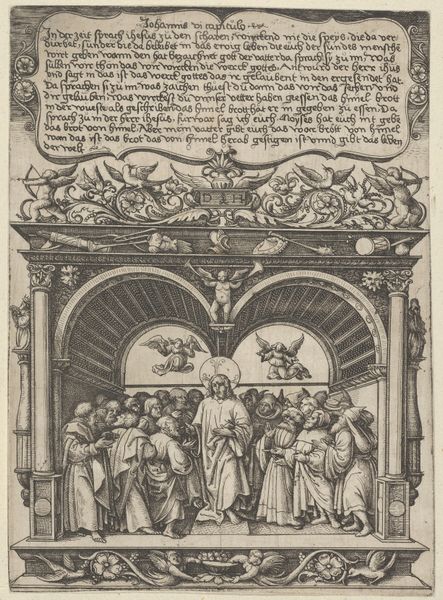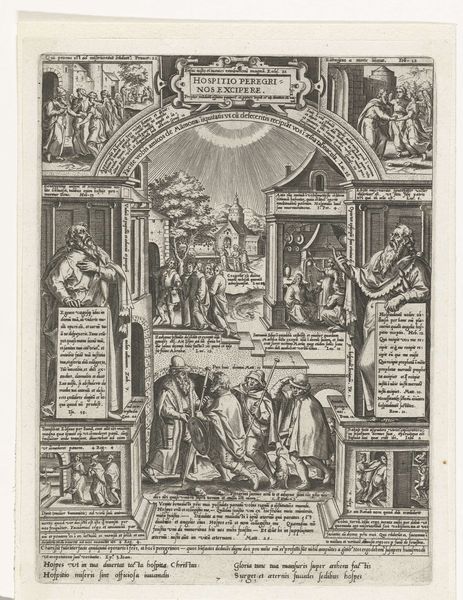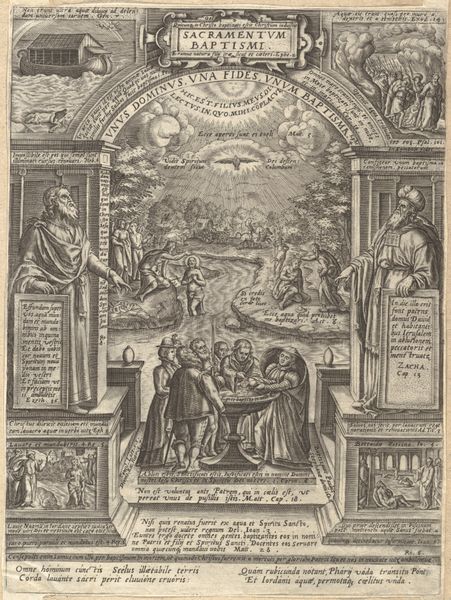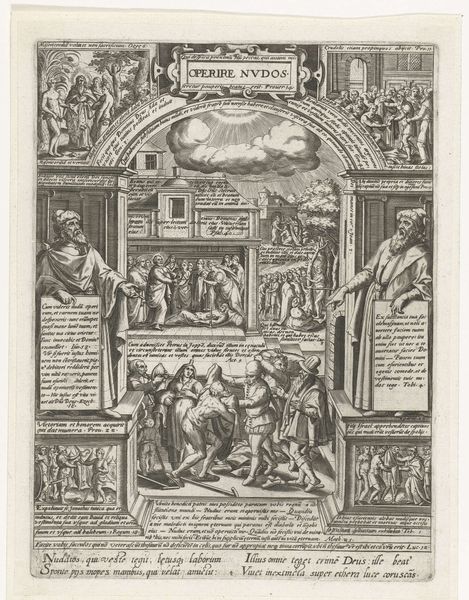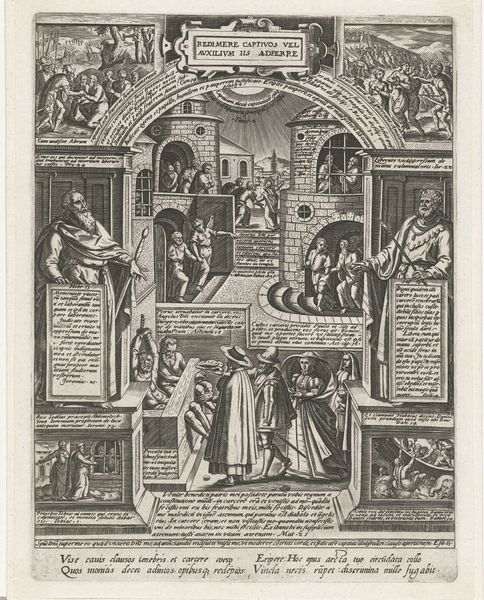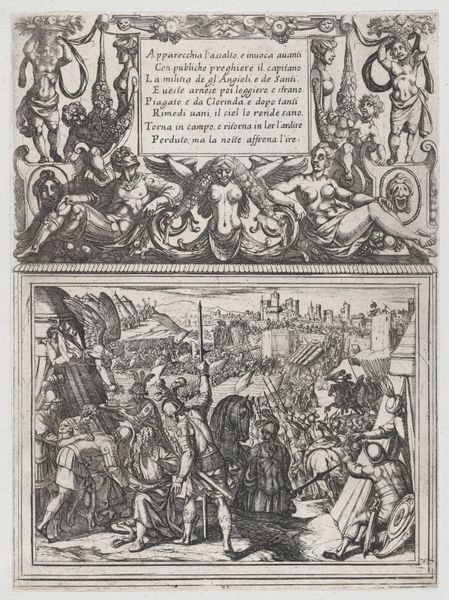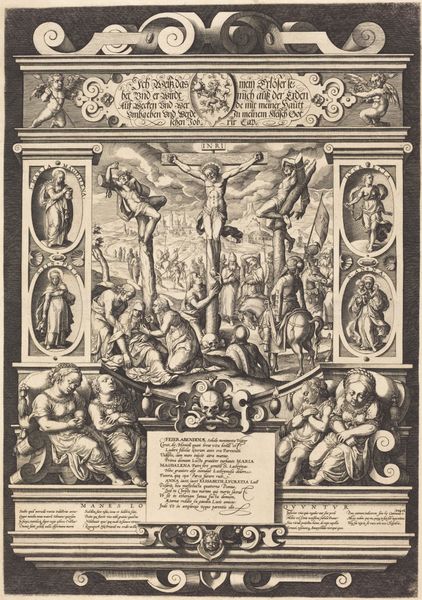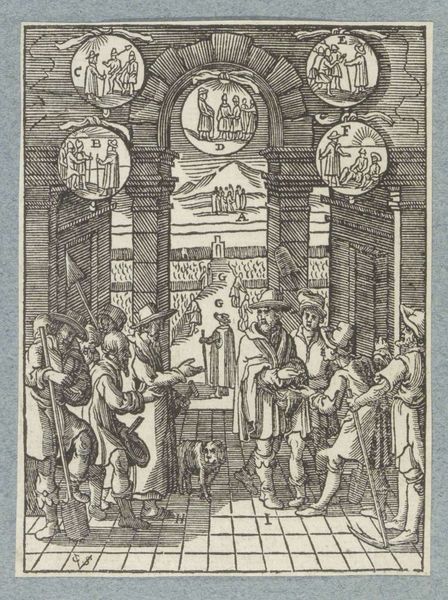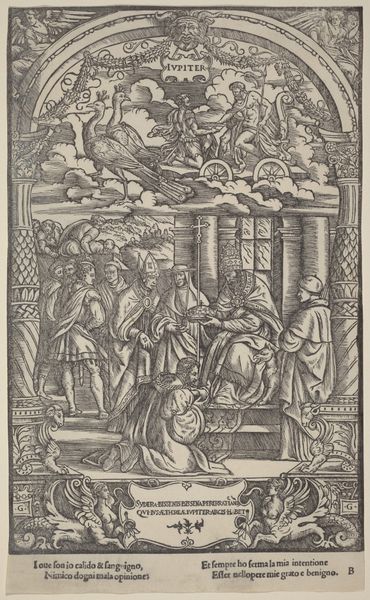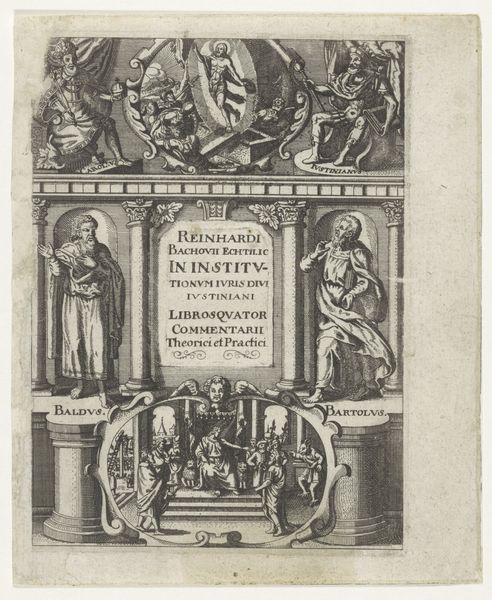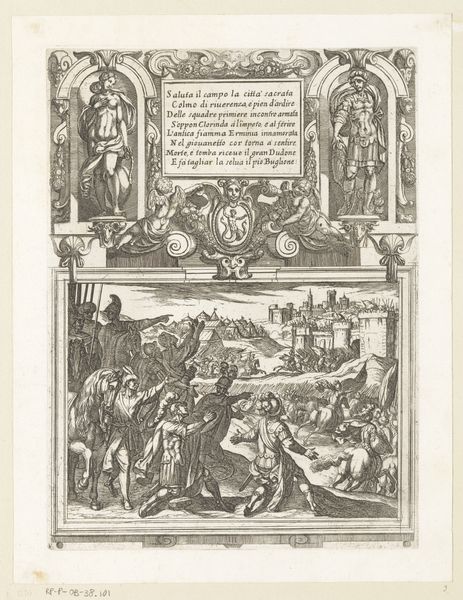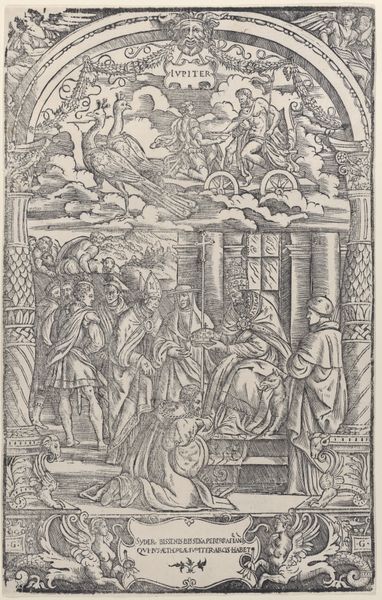
drawing, print, woodcut, engraving
#
drawing
#
pen drawing
# print
#
figuration
#
woodcut
#
history-painting
#
northern-renaissance
#
engraving
#
christ
Dimensions: sheet: 8 9/16 x 6 in. (21.7 x 15.3 cm)
Copyright: Public Domain
Curator: Immediately, the intricate lines of this early 16th-century print draw the eye. It has a distinctly reverent feel, almost like a meticulously rendered architectural drawing, though the cherubs soften it somewhat. Editor: The somber mood is what struck me first. Despite the cherubs, the overall impression is austere. Is this one of Hopfer's works? The atmosphere reminds me of a stage setting – formal and imposing. How was it constructed? Curator: This is indeed by Daniel Hopfer, circa 1515-1525, titled "Christ Testifying his Mission.” He used a combination of techniques including etching, engraving and woodcut. As you pointed out the symmetry and organization create a sense of theatricality. Hopfer has meticulously depicted Christ, surrounded by his disciples under a columned arcade, and framed it with complex allegorical ornaments. Note the text above in Old German giving the viewer an explanation. Editor: So, how do we situate an image like this within the wider religious landscape of its time? To me, the sheer density of ornamentation – the garlands, the cherubs – feels almost desperate, as if to reinforce a theological message that was perhaps already under threat. How would this image have been interpreted by different audiences during the Reformation? Curator: Given the tumultuous religious environment in early 16th-century Germany, the artwork takes on significance as a statement of faith in a changing world. The iconographic complexity served both to inspire the faithful and as a tool of religious teaching and cultural cohesion. In this context, the columned arches speak not of confines but act as pillars of religious authority, visually reinforced in a climate of immense transformation. Editor: I appreciate that tension: religious authority battling reformation and transition. Framing religious identity is vital given religious turmoil, as such artistic representations acted as symbols of persistence and opposition, marking identity amid change. The placement in the Metropolitan Museum continues its communicative function, offering a space of dialogue about cultural memory and ideological contestations. Curator: Seeing this work really opens up the possibility of visual dialogue with history and theological reflection, and thinking about its placement is quite rewarding, indeed. Editor: Precisely! Analyzing art within its original context lets us rethink our contemporary frameworks of interpreting visual and social identities.
Comments
No comments
Be the first to comment and join the conversation on the ultimate creative platform.
